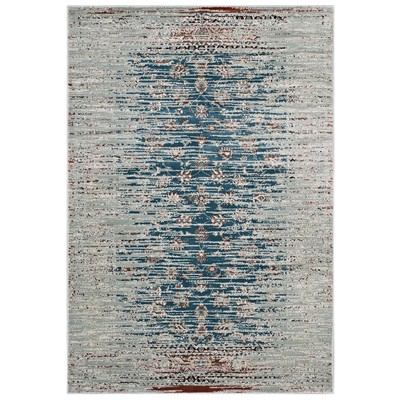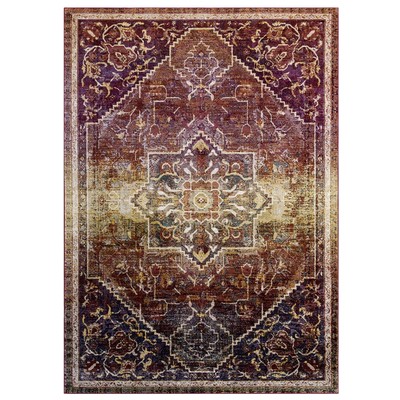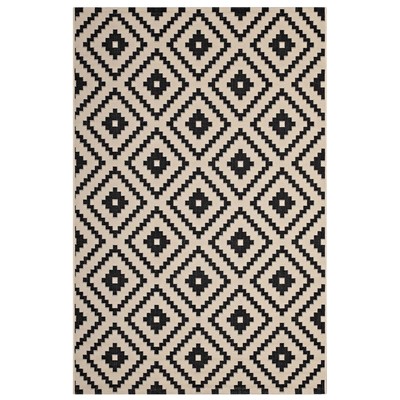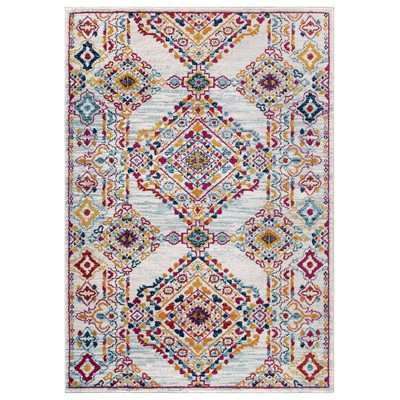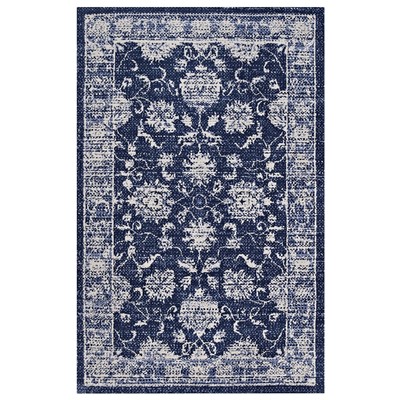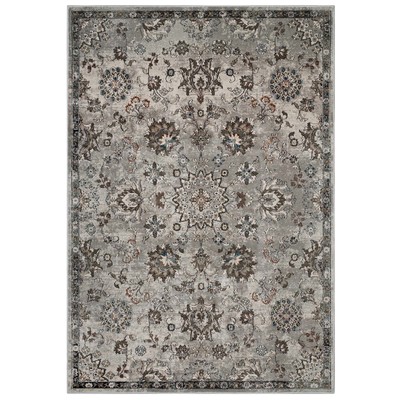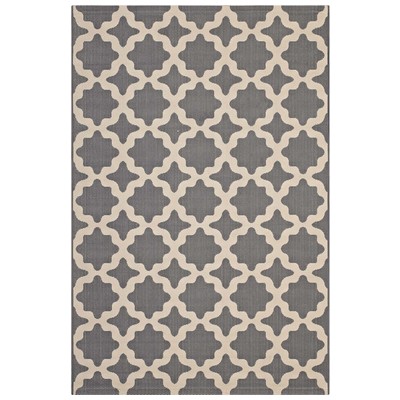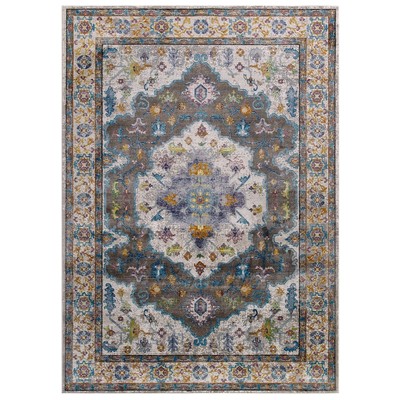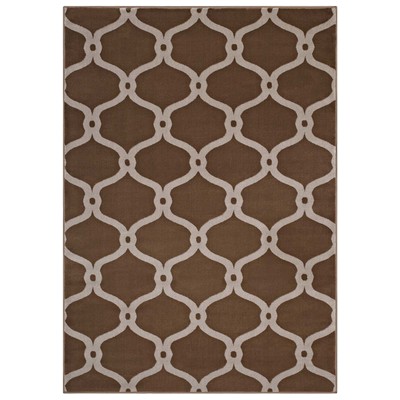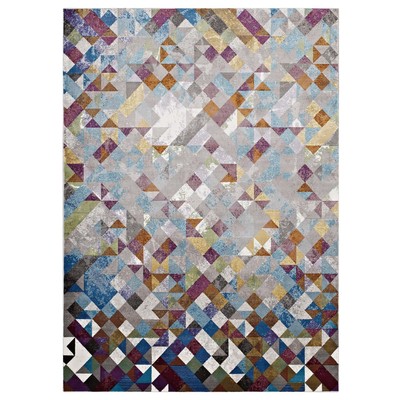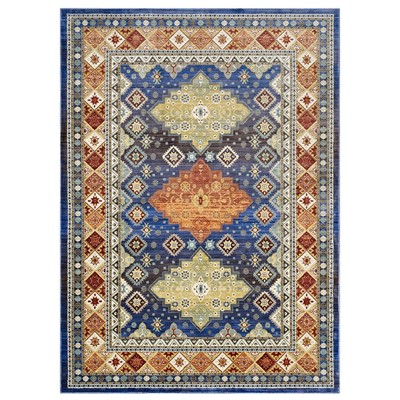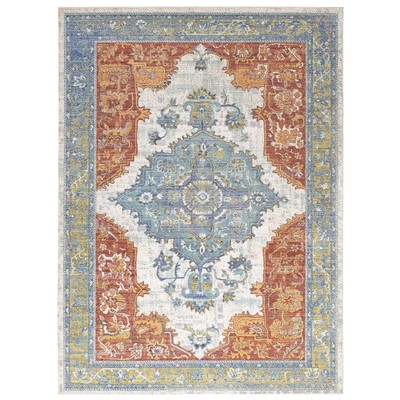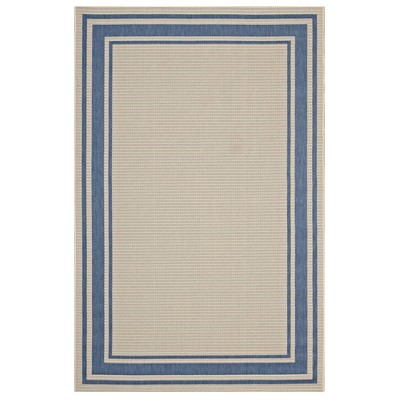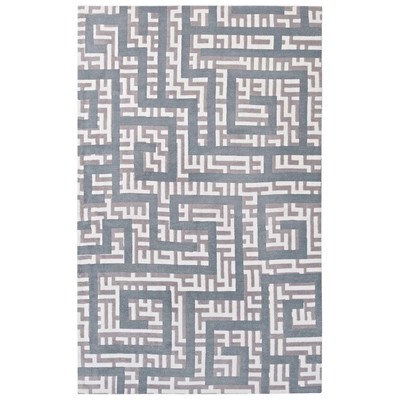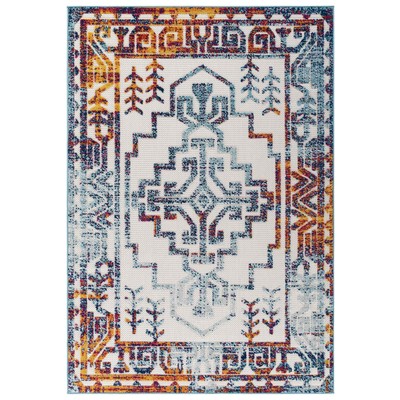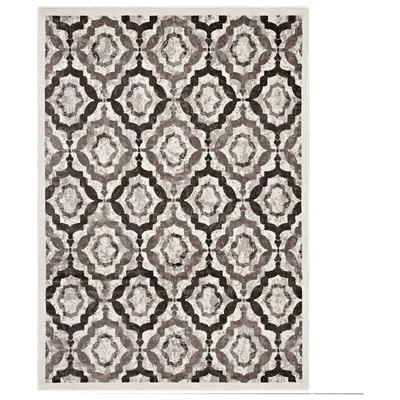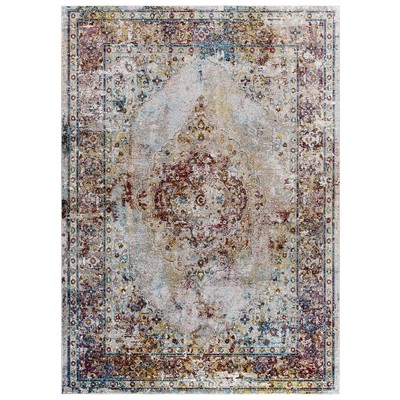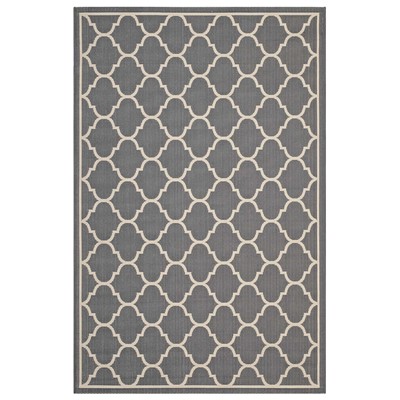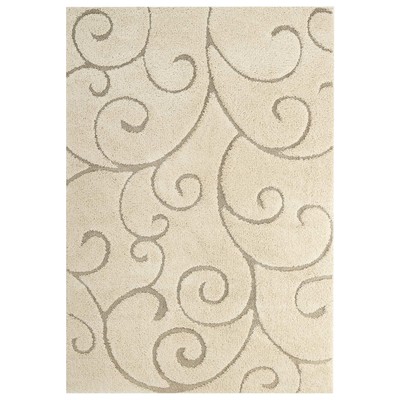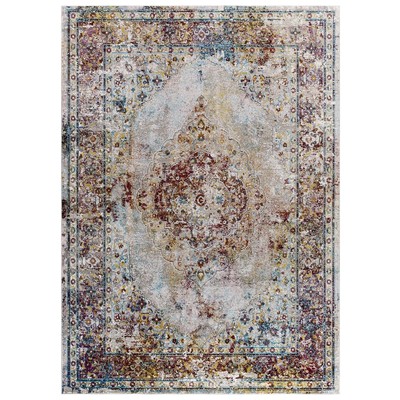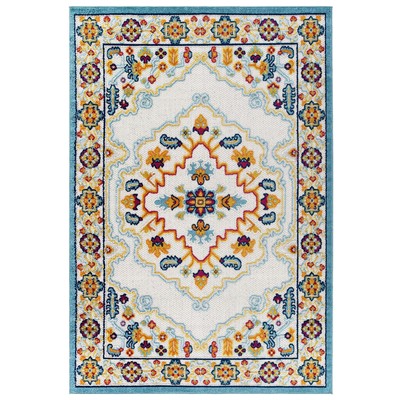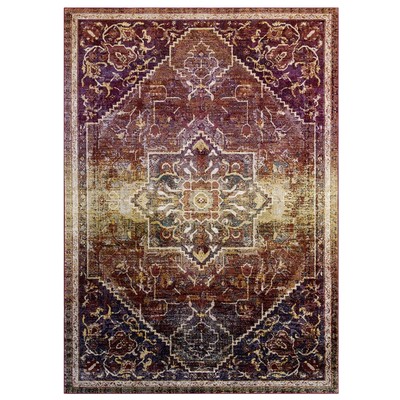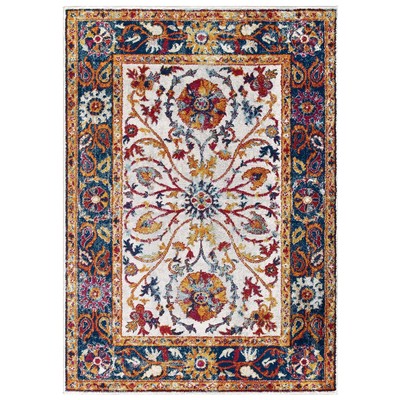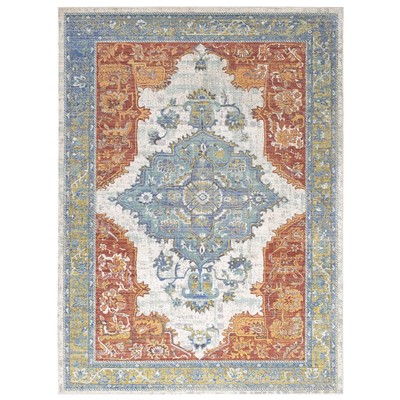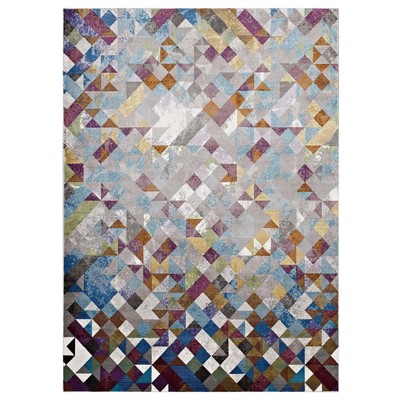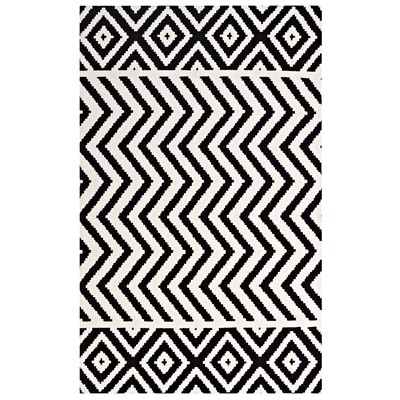When it comes to choosing a new area rug, there are so many guidelines, opinions, and tidbits of advice out there that the prospect of buying one can feel much more daunting than it actually is. This series aims to collect and distill some of the conventional wisdom about how to find the perfect rug. Today, I’m looking at the rules for buying an area rug for every room in your home.
Living Room

The living room is easily the most difficult room to pair with an area rug. Why? Because all living rooms are different – both in size and shape and in terms of what furniture you’re using. There’s also more than a little disagreement between designers about the “right” way to do it. That said, the first step is measuring the dimensions of the room and furniture in it. The rug should be longest where the room is longest, so the two flow together. It should also be large enough for your furniture to be at least partially on top of it, and at least six inches wider than your sofa on both sides. In a larger room, you probably won’t have to worry about a border along the edge of the room. But in a smaller space, you want to ensure you have 18 inches of floor showing on all sides.
Shop Rugs:
Working With Smaller Area Rugs

The big debate when it comes to rugs in the living room is: feet on, feet off, or half on/half off. If you ask me, there isn’t one definitive right way (though don’t tell anyone I said so!). Placing all your furniture completely on the rug creates a clearly defined conversation area. Having only the front two feet on leaves the area more loosely associated. A half on/half off style generally works better when the sofa is closer to the wall (as it’s a little harder to tell that it doesn’t go all the way back). But in a larger space it can make the rug look undersized. And really make sure your furniture is half way onto the rug; if the front feet of your sofa barely reach, the final look will be awkward.

Many designers pooh-pooh the idea of having a small (“postage stamp”) rug centered beneath the coffee table and not touching any of the other furniture. That said, this is an option if you’re on a tight budget. Above all, though, it’s important to be consistent. Whatever you decide to do, make sure all your furniture has the same number of feet on the rug, and space them more or less the same distance in; it’ll help make the arrangement look more intentional.
Great Room

If choosing a rug is fiddly for your average living space, in a very large great room it’s positively imperative. Because there aren’t walls to divvy up your space, you have to rely on area rugs to do it. Each rug should define its own space, usually a main living room set, a separate conversation or game area, and a dining space. Ideally, you want all your furniture to sit entirely on top of the rug, leaving several inches of floor visible between each rug. How large a gap you’ll need depends on the room, but this small separation keeps each zone distinct. That said, look for rugs in the same general color scheme. They don’t have to be the same rug or even in matching patterns, but carrying variations of the same color throughout each zone of a great room will give the whole space a nice visual unity.
Bedroom

In a bedroom, area rugs create a buffer between the cold, hard floor and your toasty warm feet first thing in the morning. A small rug on the side of the bed looks a little too much like a bath mat; they’re fine if you need the pure functionality, but if you can afford it, a larger rug is better. Ideally, you want to lay the rug about 2/3 of the way underneath your bed, with about 2 feet of overhang on all sides. This will put the edge of the rug right where your feet go when you get out of bed and create a U of safe, warm, cushiness all the way around the bed, all while giving your bed a grand appearance. Unfortunately, you will need a big rug. If that isn’t in your budget, consider overlapping multiple smaller rugs underneath the bed.
Dining Room

Adding an area rug to a dining room is a necessary evil. Really nice floors – especially hardwood floors – are easy to damage with oft-used dining chairs. Putting a rug underneath the table and chairs is a simple way to prevent this from happening. But chair legs can easily catch on the edges of a too-small rug; it’s a petty but perpetual frustration you and your guests will have to live with if you measure wrong. Dining rooms are also a high spill-risk area, which isn’t great for the longevity of your rug. With that in mind, be absolutely sure that you buy a rug that’s big enough – at least 18-24″ longer on all sides than your dining table.

Ideally, you want to pull your chairs out from the table, measure the space, and add a few inches. Be sure to account for the table leaf if there is one, and look for a material that you can vacuum and spot clean. In an enclosed dining room, you might struggle with limited size options; standard-size rugs might not match the dimensions of your table or be large enough to bump into the surrounding walls. If you have an odd-shaped space, consider having a rug custom-fabricated. You can also build your own from carpet tiles to ensure you get a rug that really fits the space.
Hallway

Whether you’re covering up ugly floors or just trying to ensure your feet will never touch cold tile, hallway rugs are among the easiest to add to your space. Ideally, you want a rug that’s approximately the same length as your hall. If it’s longer or shorter, make sure the gaps at the ends of the hall are equal in length. Make sure your rug is wide enough to walk on comfortably, but narrow enough to leave a 6 inch gap of visible floor on either side. If you use multiple shorter rugs, leave about 6 inches of space in between them, too. This is just enough to make them distinct, but still close enough to step directly from one to the next. Keep in mind, furniture should never touch a hall rug; if you have a larger, furnished hallway, leave enough space for furniture to stand on its own.
For more information about getting the ball rolling, check out Part 1 and Part 3 of this series.


